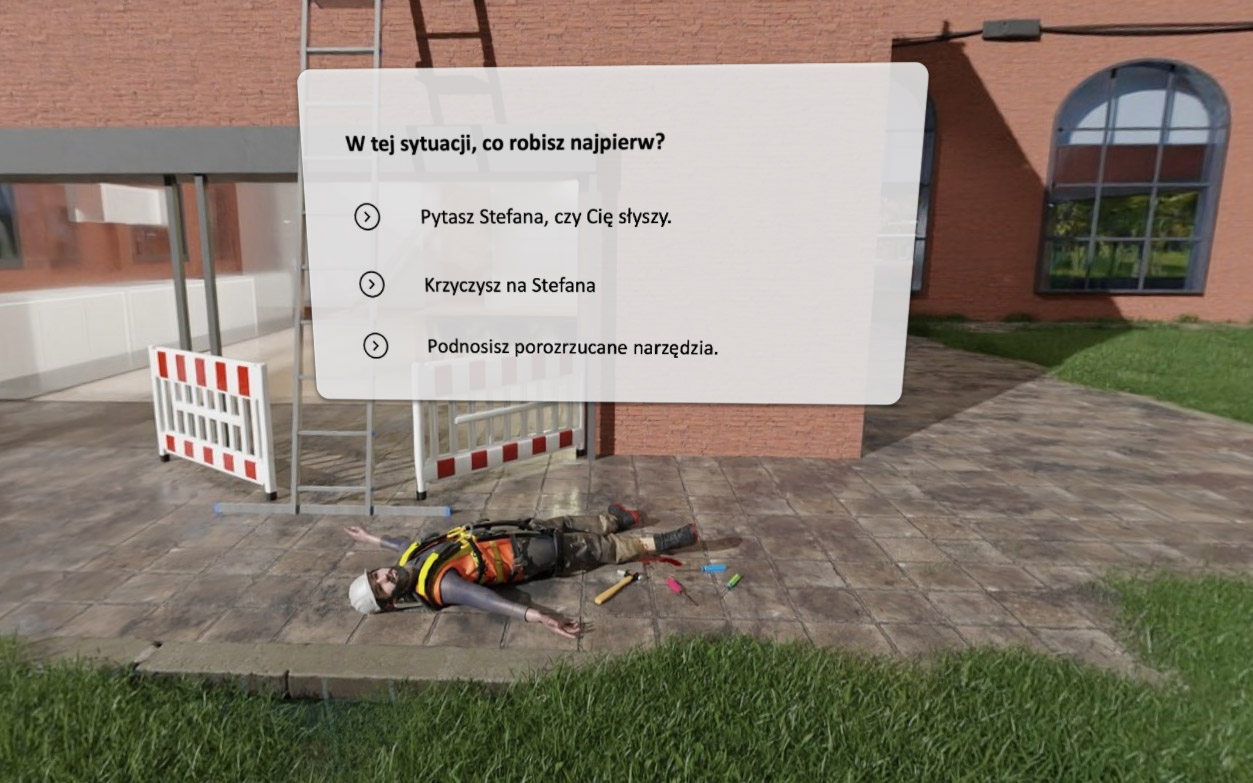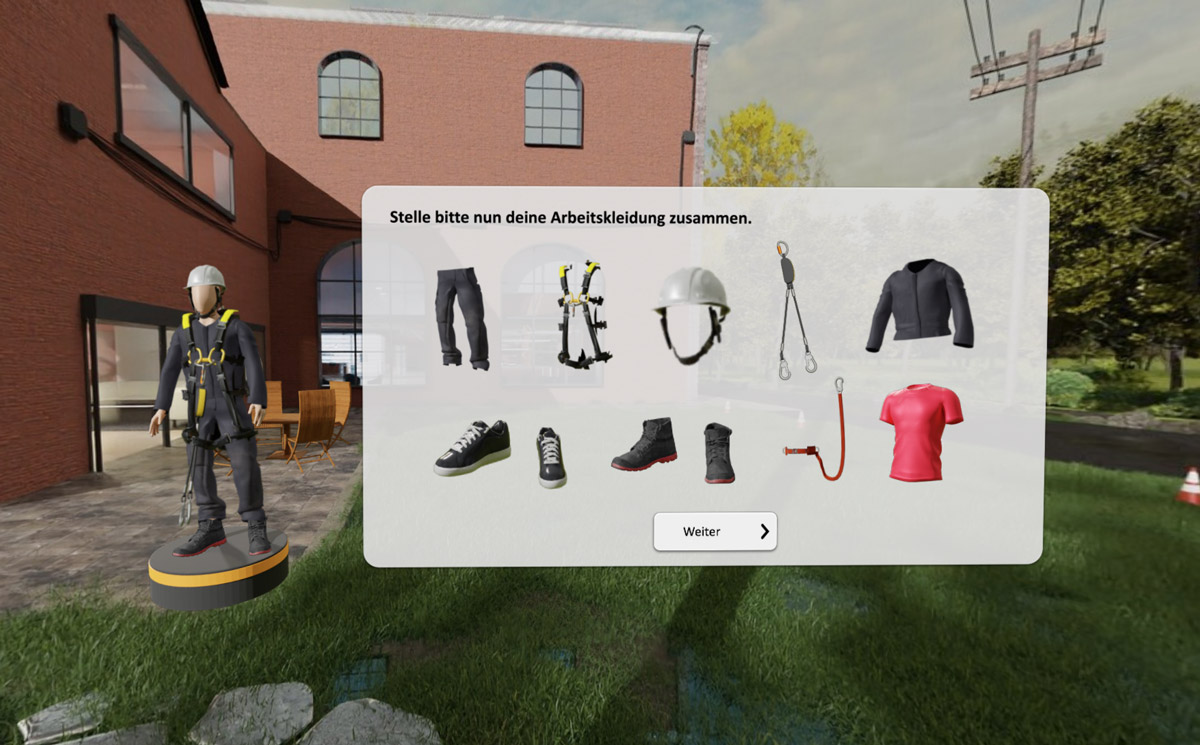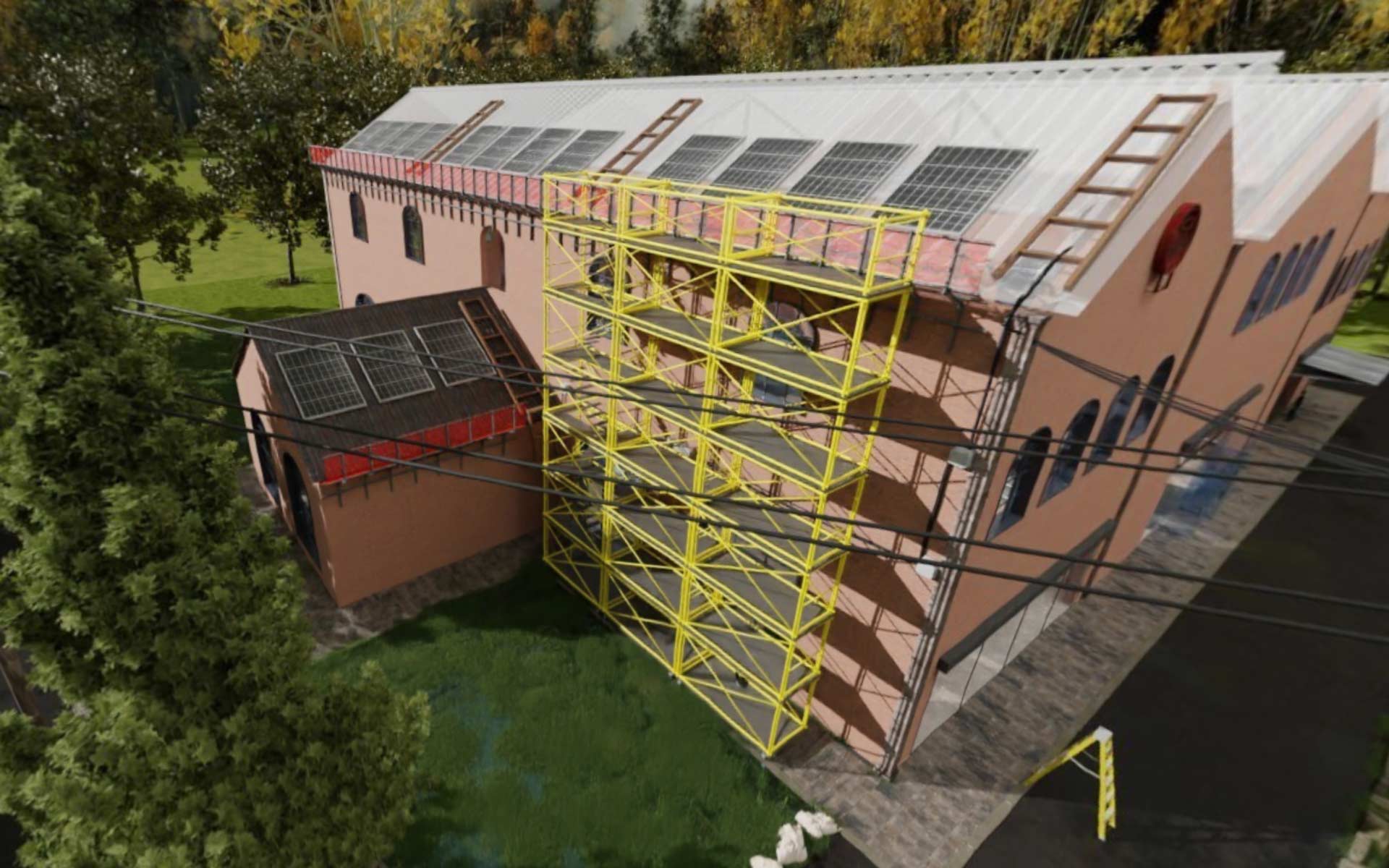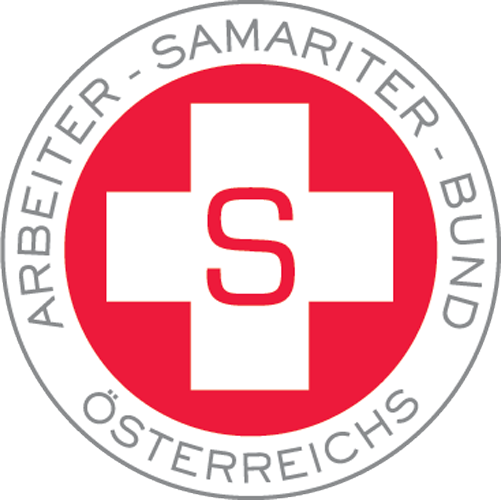In the fast-evolving digital landscape, the AK-Digitalisierungsoffensive spearheads an innovative approach to upskilling workers, particularly those whose professions require them to brave the heights. Recognizing the critical need for enhanced safety training amidst an uptick in roof-related accidents, largely propelled by the photovoltaic boom, a pioneering XR safety training initiative has been launched. This venture aims to arm workers with the knowledge and skills necessary for safe practices on roofs, handling ladders adeptly, and executing prompt and effective responses post-accidents.
At the heart of this project is a collaborative synergy between EXP360, PwC Austria, the Arbeiterkammer Burgenland (AK Burgenland), and the Samariterbund, each bringing in their unique expertise to develop immersive VR training modules. This partnership underscores a shared commitment to leveraging cutting-edge virtual reality technology to foster a safer working environment for those navigating the challenges of working at elevated heights.
We are immensely proud and grateful for the trust and support bestowed upon us by our esteemed partners. This project not only aligns with the objectives of the AK Bildungsoffensive but also sets a new benchmark in safety training, offering a dynamic, engaging, and effective learning platform. The fruition of this initiative marks a significant milestone in our collective endeavor to enhance workplace safety and underscores the potential of virtual reality as a transformative tool in educational and training contexts.
This successful project is another example of sustainable and affordable VR experiences for institutions in 2024.
Table of Contents
Features of the Roof Safety Training in VR
The XR Safety Training, developed in collaboration with EXP360, PWC Austria, AK Burgenland, and the Samariterbund, stands as a pioneering effort to elevate workplace safety training to new heights. This comprehensive program is meticulously designed to address the critical aspects of working safely in elevated environments, such as rooftops, a concern accentuated by the surge in photovoltaic installation projects.

In-Depth VR Scenarios:
The training is segmented into four immersive modules, each targeting a key safety domain:
Securing the Work Environment: Trainees learn the importance of preparing and securing the work area before commencing any rooftop tasks, ensuring all safety measures are in place.
Safe Work Practices on Roofs: This module focuses on the best practices for working safely on rooftops, emphasizing the use of appropriate safety gear and adherence to protocols that mitigate the risk of falls and other accidents.
Emergency Response and First Aid: Two scenarios dive into the immediate actions and first aid measures to be taken in the event of accidents, specifically detailing procedures for instances where an individual falls from the roof or onto the ground, providing essential knowledge on how to respond effectively to preserve life and minimize injury.
In-Depth VR Scenarios:
Understanding the diverse needs of learners and organizations, the training has been made available in two distinct formats:
VR Headset Kits: For a deeply immersive and impactful learning experience, the training is offered through VR headsets. These kits, packed into a compact case, are loaned out by AK to interested companies, facilitating an engaging and memorable safety training session that leaves a lasting impression on the participants.
Web-based Version: To ensure broad accessibility and convenience, the training is also available as a web-based version. Accessible through internet browsers on PCs and laptops, this format allows for widespread dissemination, enabling individuals and organizations to easily integrate it into their training programs.
The dual-format approach of the XR Safety Training ensures that it is not only a cutting-edge tool for learning but also a versatile one. By offering both an intensive VR experience and a readily accessible web version, the training bridges the gap between immersive learning and practical accessibility, making it a valuable asset for enhancing safety protocols in the rapidly evolving landscape of rooftop work and beyond.
The Importance of Safety Training
The surge in rooftop work, especially with the exponential growth in photovoltaic installations, has underscored a pressing need for comprehensive safety training. As we venture further into a future powered by renewable energy, the rooftops of homes, businesses, and public buildings have become critical sites of energy independence and climate neutrality efforts. However, this vital transition is not without its hazards, as evidenced by a notable increase in accidents among those tasked with installing and maintaining these systems.
The Arbeitsinspektion Burgenland sounded the alarm on this emerging issue, highlighting an urgent need for innovative solutions to mitigate risks for workers. It is within this context that the importance of safety training becomes paramount, not just as a regulatory requirement, but as a moral imperative to protect those at the forefront of our transition to green energy.
Responding to this need, the initiative to transform standardized safety training manuals into engaging and interactive VR experiences was born. This pioneering approach leverages the immersive power of virtual reality to simulate real-life scenarios workers might encounter, allowing for a form of experiential learning that is both effective and memorable. By gamifying the learning process, we not only make safety training more accessible and enjoyable but also ensure that crucial safety protocols and emergency response techniques are learned in a manner that sticks. This transition from static manuals to dynamic VR environments marks a significant leap forward in safety training, promising a safer and more informed workforce equipped to navigate the complexities of rooftop work with confidence and competence.
Benefits of the VR Training
VR training, especially in the context of safety protocols for high-risk environments like rooftop work, offers a myriad of benefits that significantly enhance the effectiveness, engagement, and retention of critical safety information. Drawing from our comprehensive discussions and inputs, here are the key advantages of employing VR training for safety protocols:
Immersive Learning Environment
VR training transcends traditional learning boundaries by placing trainees in highly immersive, realistic environments that closely mimic actual working conditions. This level of immersion fosters a deeper understanding of the material, as learners can virtually experience the consequences of their actions in a controlled, risk-free setting.
Enhanced Engagement and Retention
The interactive nature of VR captures the attention of users far more effectively than traditional learning methods. By engaging multiple senses, VR training ensures that learners are not just passive recipients of information but active participants. This engagement significantly boosts retention rates, making it more likely that trainees will remember and apply what they’ve learned when it matters most.

Safe Simulation of High-risk Scenarios
One of the standout benefits of VR training is its ability to simulate dangerous or high-risk situations without putting learners in harm’s way. Trainees can practice and repeat procedures for emergency situations, like dealing with falls or equipment failures, in a safe environment. This exposure prepares them mentally and physically for potential real-life emergencies.
Standardization of Training
VR ensures that every trainee receives the same quality of training, regardless of their location or the trainer’s expertise. This standardization is crucial for maintaining high safety standards across the board, especially in industries where the risk of accidents is high. Additionally, using VR training experiences for standardized trainings reduces the costs per trained individual tremendously.
Accessibility and Scalability
With VR, training programs can be easily distributed and accessed by a wide audience without the need for physical presence in a classroom setting. This scalability and flexibility allow organizations to train a large number of employees efficiently and consistently, even in remote or multiple locations.
Instant Feedback and Assessment
VR training platforms often incorporate real-time feedback and assessment tools, allowing learners to immediately understand their mistakes and correct them. This instant feedback loop accelerates the learning process and ensures trainees achieve a high level of competency.
Cost-Effectiveness Over Time
While the initial investment in VR training may be higher than traditional methods, the long-term savings are significant. VR reduces the need for physical training materials, travel, and instructor-led training sessions. Additionally, the reduction in workplace accidents due to better-prepared employees can lead to substantial savings on insurance and liability costs.
Innovative Approach to Compliance Training
Turning mandatory compliance and safety training into an engaging VR experience can transform often tedious subjects into compelling learning journeys. This innovative approach not only ensures compliance with industry regulations but also fosters a culture of safety and continuous learning within organizations.
By leveraging the unique capabilities of VR, organizations can create a more effective, engaging, and safe training environment that prepares workers for the challenges of modern workplaces, particularly in sectors where the stakes for safety are high.
Advantages of Choosing EXP360 for VR Experiences
The transformative power of EXP360 lies in its unique blend of affordability, dynamic content creation, and extensive reach. Here’s why EXP360 stands out as the premier choice for institutions looking to harness the potential of VR:
Affordability and Dynamic Content
EXP360 democratizes access to VR by offering cost-effective solutions that do not sacrifice quality or engagement. This affordability opens doors for institutions of all sizes to incorporate VR into their training, education, and marketing strategies. Moreover, the platform supports dynamic content, enabling creators to develop rich, immersive experiences that captivate users.
Multi-Channel Distribution
One of EXP360’s key strengths is its ability to distribute content across a multitude of channels. This versatility ensures that VR experiences reach audiences wherever they are, from websites and mobile apps to the Guide Kit VR headsets and beyond. Such wide-ranging distribution amplifies the impact of VR initiatives, making them more accessible and engaging to a broader audience.

User-Friendly Content Creation
With EXP360, creating VR experiences is as intuitive as crafting a presentation in PowerPoint. The platform’s editor simplifies the process, allowing anyone to design compelling VR content without requiring advanced technical skills. This ease of use accelerates the production process, enabling institutions to roll out new VR experiences rapidly.
Rapid Content Update and Deployment
In the fast-paced digital world, the ability to quickly update and deploy content is crucial. EXP360 excels in this area, offering streamlined content updates and maintenance without the complexities of Mobile Device Management (MDM) or APKs. This flexibility ensures that VR experiences remain current, relevant, and effective over time.
Measurement and Dynamic Improvement
The dynamic nature of EXP360 content not only facilitates easy measurement of user engagement and effectiveness but also allows for rapid iterations based on feedback. Institutions can refine and enhance their VR experiences in real-time, ensuring continuous improvement and adaptation to meet the evolving needs of their audiences.
By providing a platform that is affordable, versatile, and user-friendly, EXP360 empowers institutions to embrace VR technology and unlock its full potential. Whether for training, therapy, or entertainment, EXP360 delivers VR experiences that are not only impactful but also sustainable and adaptable to future advancements.
Conclusion
This project underscores the pivotal role VR technology plays in elevating workplace safety standards. By blending immersive learning with practical scenarios, EXP360 and its partners have set a new benchmark in safety training. We invite you to experience this innovative approach yourself through the EXP360 share link, and see how VR is revolutionizing training for safer work environments.






